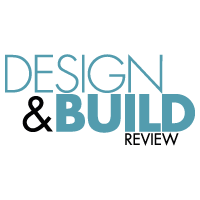Heart of the matter: Future architects need to refocus around buildings’ humanity
A new series of articles from engineering and infrastructure advisory company Aurecon explores what members of the industry imagine the buildings of the future to look like and how they will be created. Callum Tyndall examines how the latest instalment shows the need to refocus around the people that will actually use the buildings
The new instalment in Aurecon’s Buildings of the Future series, titled, ‘Buildings of the Future: people at the centre’, reveals a worrying lack of focus around the place of people within buildings and the need for change in the future.
With rapid technological development allowing the industry to experiment and expand in new ways, it seems that one of the founding concepts of design has been lost in the rush to try whatever the newest tool or trend may be.
But in order to create a design that benefits its users, architects need to realign design between how an engineer may view an ‘intelligent’ building and how the actual occupier would view an ‘intelligent’ building.
Putting humans at the centre of design: Catering to wellness pays off
A survey by Management Today magazine found that while 97% of respondents considered their place of work as a symbol of whether or not their employer valued them, only 37% considered their offices to have been design with ‘people in mind’. The Aurecon report highlights that, when designing for the future, companies should consider buildings with a view to the wellness of their occupants, particularly as it has been shown that providing the proper emphasis on said wellness can in fact result in material gains.
“ Building design is not (only) about bits and bytes, but flesh and bones. ”
Solatube’s ‘Facts & Figures’ report highlights how a Kansas Walmart’s decision to install skylights over half of the store in a bid to reduce energy costs inadvertently resulted in significantly more sales per square foot in the section of the store exposed to daylight. Simple decisions that emphasise wellness, such as catering to people’s desire for spaces illuminated with glare-free daylight, can in fact, result in a more positive outcome than simply trying to cut costs at the expense of occupants.
“Building design is not (only) about bits and bytes, but flesh and bones,” said Aurecon’s Buildings of the Future leader, Peter Greaves. “We need to take a step back and remember that humans are at the centre of everything we design. Buildings of the future are about designs that unlock human potential. High tech is only high value if that same technology enhances human experience.”
A continuous feedback loop of ideas: producing concepts for adjustment and optimisation
The challenge of putting people at the centre of design needs to be addressed at every stage of a project, ensuring that everyone involved is working to the same end goal and that those who will actually use the building can bring a practical influence to the process. Designers and engineers need to have a concept of the building not in the abstract, but in how it will actually be used and what needs those using it may have.
“ Human centred design is enabled through collaborative design, rapid prototyping and optioneering. ”
“Human-centred design is enabled through collaborative design, rapid prototyping and optioneering. When the right stakeholders are brought in during the concept and design phase and you’re able to make ideas tangible and get quick feedback from the people that you are designing for, then the building designers and engineers can learn through producing,” Greaves said.
Rather than elaborately planning an inflexible, “perfect” building, the report suggests that designers should instead be looking to create a “continuous feedback loop” of ideas, producing prototypes that are open to adjustment and optimisation.
Technology can also serve a promising purpose here, with visualisation options ever expanding to help optimise around the occupants’ finished experience. It remains vital though, that technology is used to help better guide future buildings to serving their occupants and that designers and engineers attune to the long-term return on investment that happy users bring.
